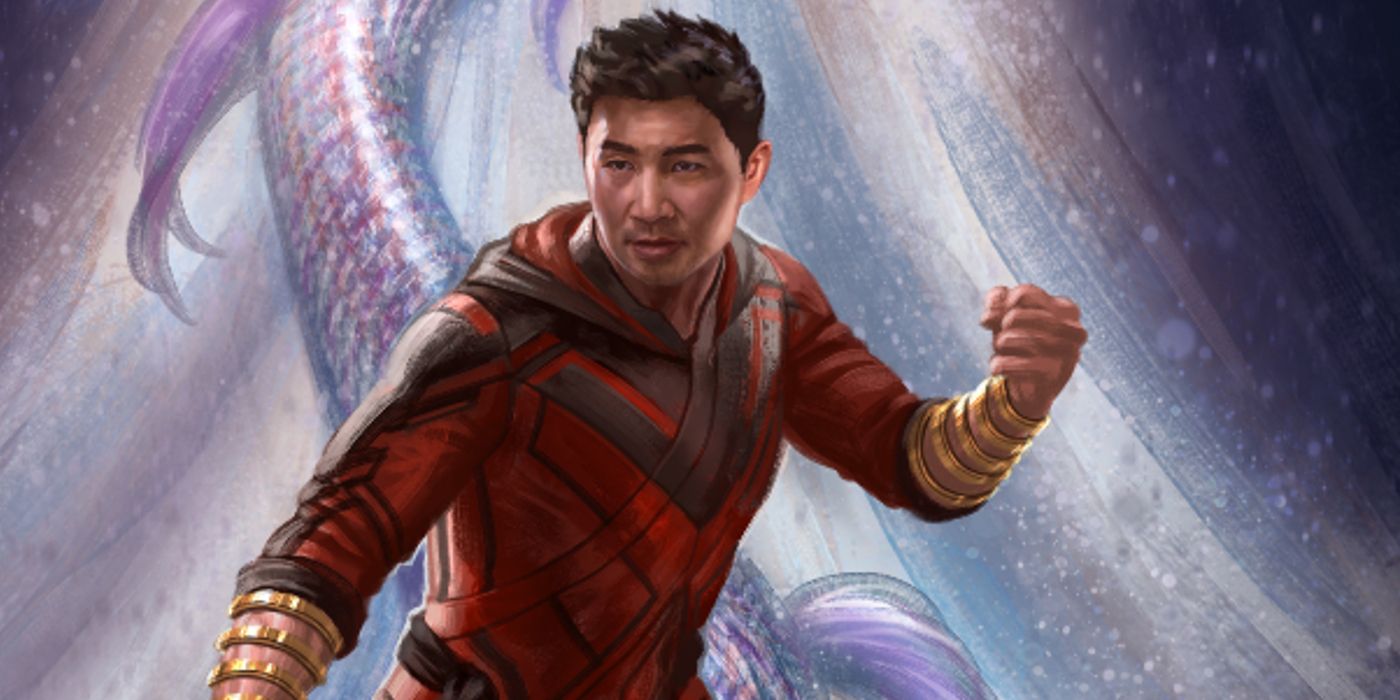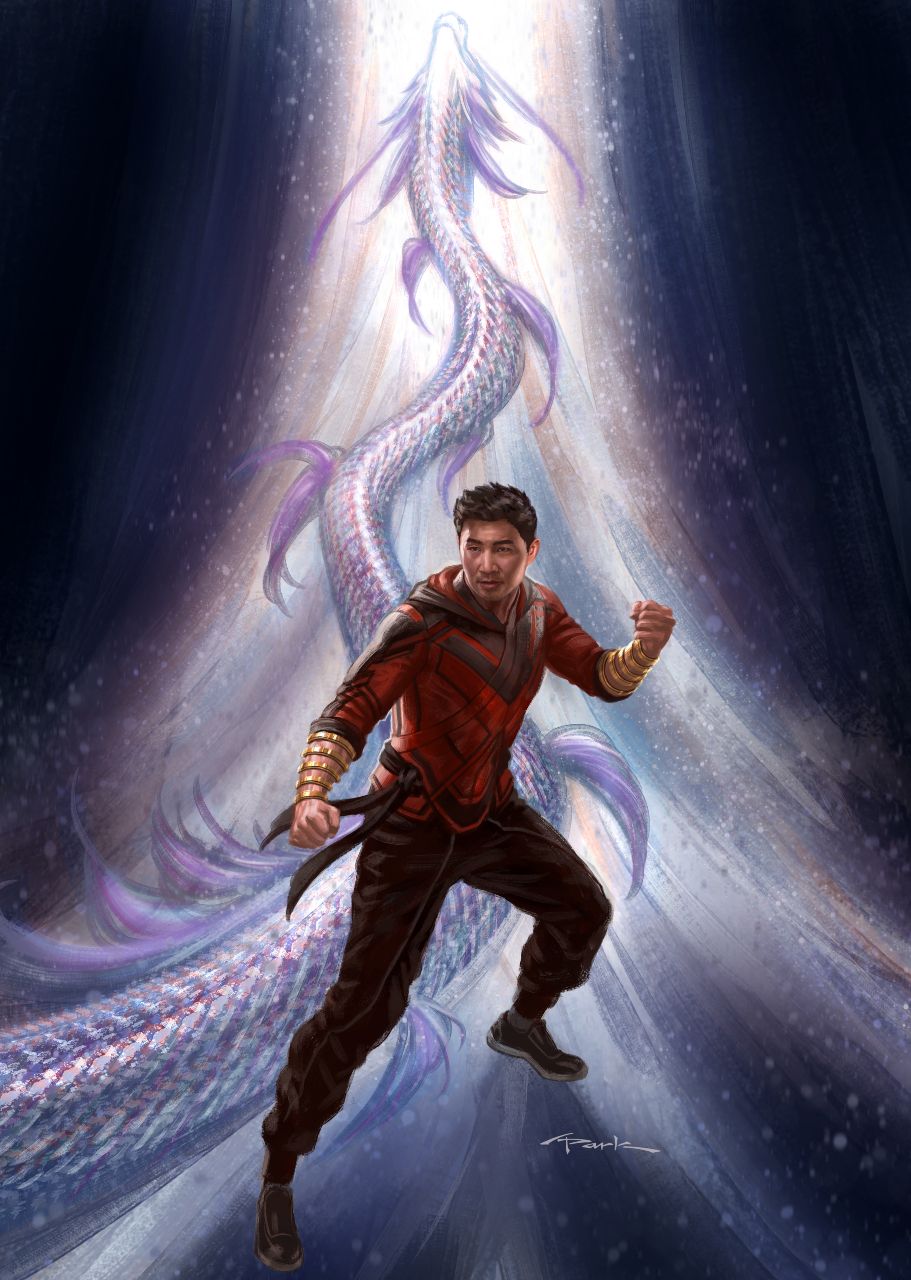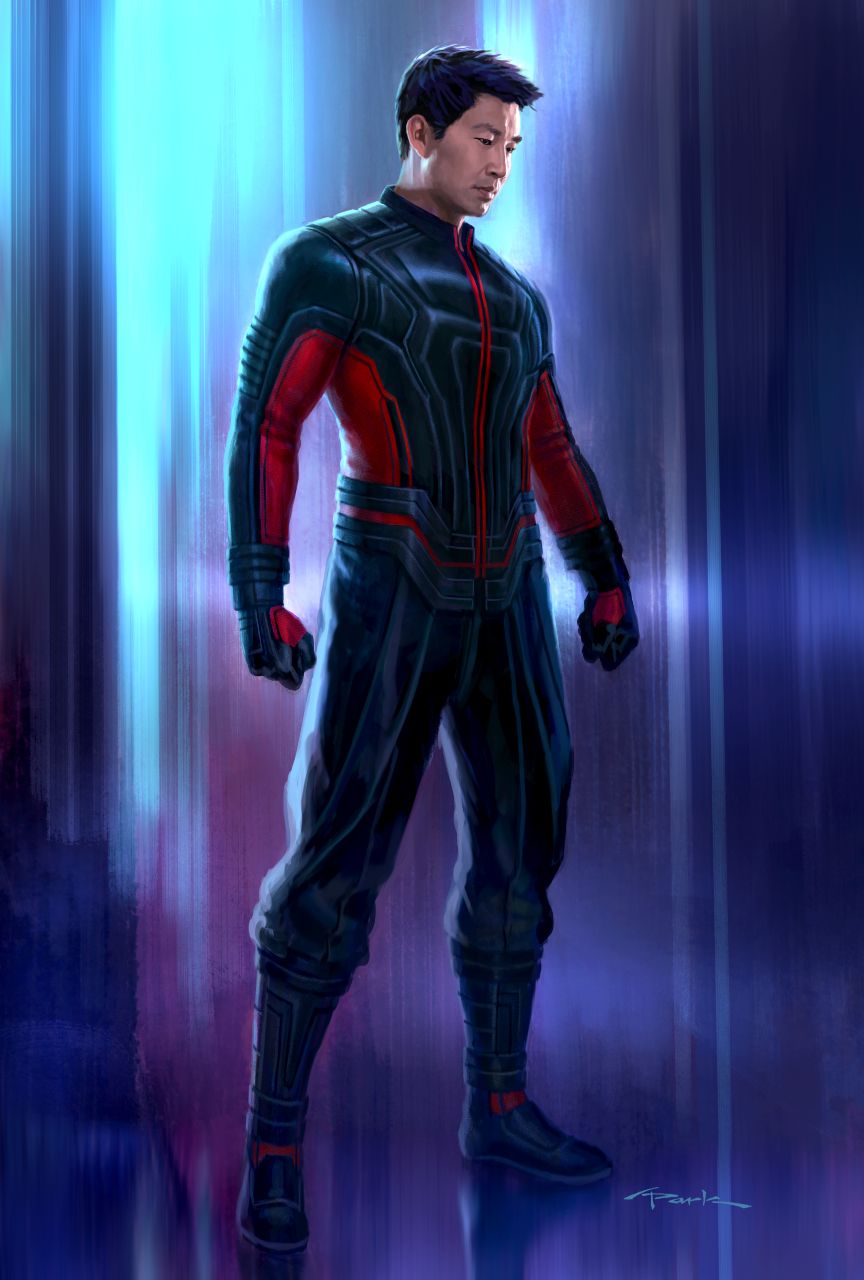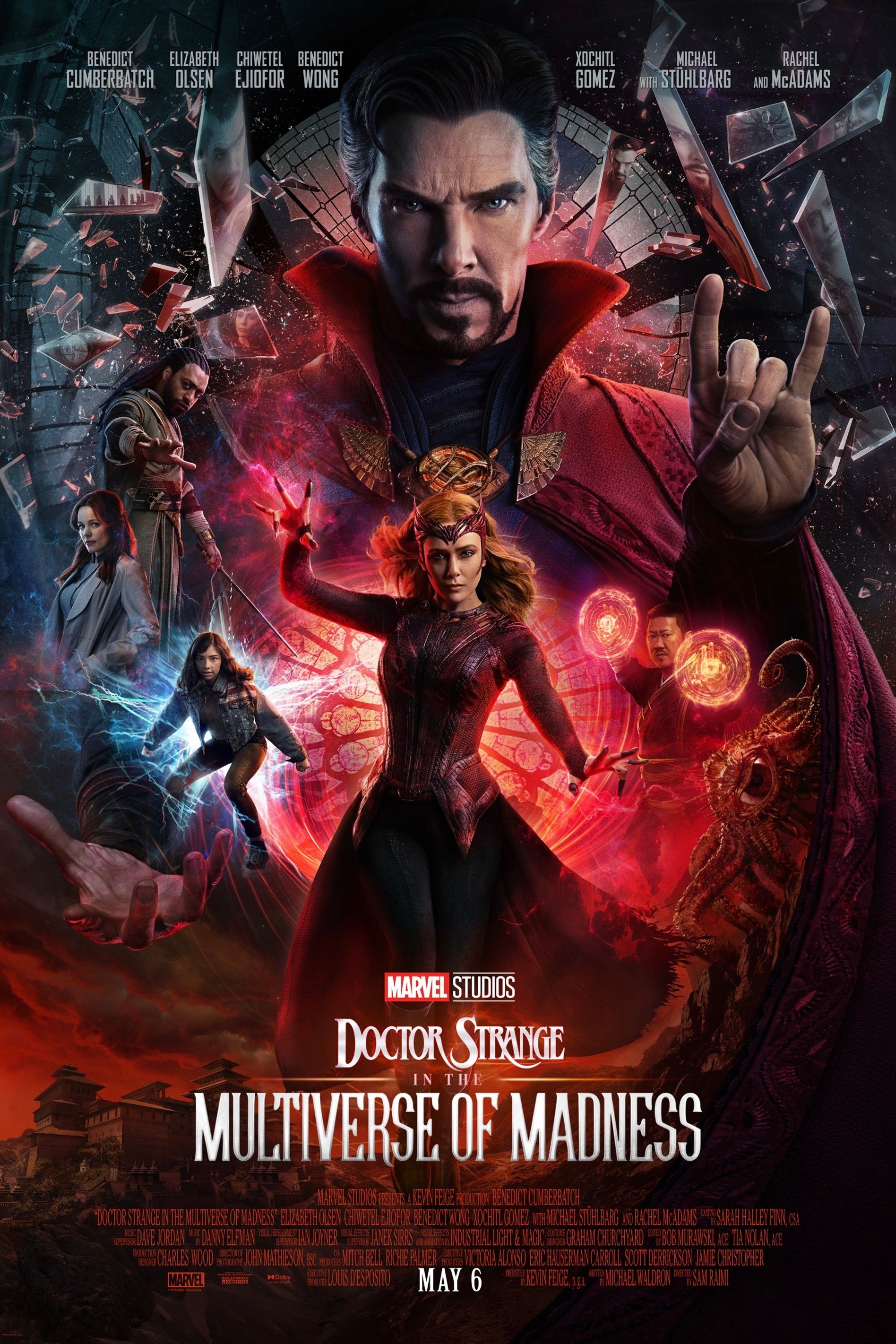Shang-Chi and the Legend of the Ten Rings has taken the world by storm since its release in August, breaking several pandemic records and widening the boundaries of the MCU for Phase 4. Diving into the origin of Shang-Chi required a great deal of research, imagination, and attention to detail - all things the creative team at Marvel are known for. Director of Visual Development Andy Park in particular had the Herculean task of making Shang-Chi's world feel familiar and exciting all at once, honoring the comics but turning over a new leaf for the films.
Park spoke to Screen Rant about designing for an Asian-American hero, collaborating with the director, and differentiating Shang-Chi from other MCU projects. Plus, check out the exclusive Shang-Chi concept art created by Park!
Screen Rant: You've been at Marvel Studios since Captain America: The First Avenger, 11 and a half years ago. And here we are, Shang-Chi: Legend of the Ten Rings. Does designing the MCU's first Asian-American superhero to have a feature film and the corner of the MCU that he inhabits have a particular significance to you?
Andy Park: Of course. I mean, for your listeners or viewers who are watching this or hearing this, whether they can see me or not, I'm Asian. I'm Asian-American. My parents immigrated from Korea. I was born and raised in the States, so pretty much in California, all my life. I grew up in the 80s, 90s, in America watching Saturday morning cartoons, all the sitcoms, all the movies. I was aware that I was a little different, growing up in a predominantly non-Asian type of community.
So yeah, I think my whole journey of growing up here in the States and finding my identity, was a challenge. You don't want to be different. You want to just blend in. Then eventually as I got older, I found my roots and embraced going from a place of feeling a little bit ashamed of my background to embracing it and being really proud. Then of course growing up, not seeing people like myself, a lot of Asians on screen or if you did, it was not something that you're totally proud of or it was sometimes you're a little embarrassed because it's more stereotypical. So, yeah, definitely.
I've been here for so long, as you mentioned, and been here for a lot of the firsts. First this character, that character, Captain Marvel, Ant-Man, Black Panther. Then of course with Shang-Chi, there's been a few Asian characters throughout the history of the MCU, but to have the first title, leading Asian character, and just the world that we've created, as you mentioned in this corner of the MCU, I'm definitely proud, happy. I have kids. They're growing up at a time when it's all normal. It's all just part of the world that we live in. So yes, I'm totally proud.
I think it did such a great job of representing Asian culture in such a beautiful way, especially amongst superheroes. In Shang-Chi, we get a new costume and a new design that we haven't seen before. How many different iterations of Shang-Chi's costume did you guys have to go through? And does it always start with the comic version and build out from that?
Andy Park: Yeah, that's a good question. I think generally speaking, yes, we go back to the source material. We're always going to be respectful to the past and all the amazing creations from creators like Stan Lee, Jack Kirby, Steve Ditko, all the hundreds of artists that have contributed to Marvel Comics. Of course, we've got to start there. We do a deep dive into exploring all the different takes, looks. These characters, always have different looks drawn by different artists. I'm looking at all that stuff. In the past, he's wearing a traditional Kung Fu outfit. A lot of times, he's depicted essentially as Bruce Lee. He's shirtless with the Kung Fu pants. I did it all. Then, of course, more recent iterations, I think he had more of the jumpsuit, which is definitely obviously inspired by Game of Death, with Bruce Lee.
I took all of that and I was exploring all different types of options. That's a starting point. Because we're working so early on, there wasn't a story yet. There wasn't a concrete story. I didn't know exactly why is he wearing this? Of course, as a designer, you need to know the whys and the hows and that'll help determine where I go in my design exploration. Early on, they just want to see high-level, blue-sky ideas. I did it all And also did a deep dive into just the Chinese culture. I looked at a lot of fashion and that kind of material.
It's things like that, the hanfu. In my research, I found out that hanfu goes left to right. The collar, the way, the significance of it, and how it also influenced other Asian cultures, Japanese, Korean, in their fashion as well. For me, I grew up Korean. I grew up wearing the hanbok, which is inspired by the hanfu. I did all that kind of exploration. Then as we developed more and more the story, Destin Daniel Cretton, Dave Callaham, and as well the producers, we started honing in on what this suit is, what this costume is. And then once the idea of Ta-Lo, the mom, the dragon, that's when it started getting refined and the ideas of, "Oh, maybe he could be wearing this outfit [as] some form of armor, some form of protection." That's when I had the idea of the dragon skin or dragon scales and that kind of thing.
That's how the ideas evolved. I did tons of just different exploration and it took several months to finally get down to a place where Destin and the producers were like, "Okay, this is the look that Shang-Chi will have near the end of the movie."
You're responsible for bringing to life a lot of the characters that are beloved by fans. Can you talk to me about the collaboration process that you work with with the story department and the director? Do you land on designs first and then as you're getting story beats work the elements into the costumes? How does the workflow that works?
Andy Park: It's very organic. Myself as well as the visual development team, I started doing work even before Destin got the job or even before Simu Liu was cast. We're working on it a lot of times, even pre-pre-production. It's not even officially in production yet, but that's one of the benefits that Marvel has and the foresight that they had early on in the early years of the MCU, of Marvel Studios as a company, where they said let's form a visual development team of artists knowing that there's going to be all these movies coming up. They always have us there. It's a unique thing in Hollywood that doesn't really exist because pretty much 99% of the movies you see out there are... There are designers and artists that work on those, but they're freelancers. They're just contractors that work just during pre-production.
Then after pre-production is done, they leave for another job and then it continues, and then they start filming. Then it goes to the post. But those artists that did those initial designs aren't there. At Marvel Studios, we're there from the beginning, even before pre-production, then during pre-production. Even as they're filming, a lot of times they'll come to us and say, "Hey, we want to further, we have either new ideas or we want to evolve certain ideas that they thought they liked." Then a lot of times, we're even there during post.
As they're going through posts, they find new things or sometimes they even want to change a character or change a look of a character where they're doing designs as well. It's a very unique setup, because of that, it's very organic. We're working on it and then eventually, the writing actually starts happening, Dave Callaham and then Destin Daniel Cretton. Then in conversations, they'll tell me certain things that they're thinking about, but there's a lot of things where they haven't honed in on what is going to actually happen. For example, they didn't exactly know what are we going to do. We know there's going to be 10 rings. But is it going to be these 10 rings, like in the comic? Then early on, Destin had the idea of doing the training rings. That's when we start implementing that and very much like Kung Fu Hustle.
Then they didn't exactly know. What do these rings do? Do they have different powers akin to the comic book? We did explorations of that as well, where maybe each ring has a different elemental property or can do different things. think at the end of the day, it got too close to Infinity Stones. So That's when the idea was, they're just more like 10 rings that are used for fighting and for, similar to blasting, but not exactly blasting, but they can do different things. They can have defensive qualities, offensive qualities, all that kind of stuff. That came along with us as well as we're developing ideas. They're like, "Oh, that's cool." And then that's how they implement certain things.
Like you saw in the final fight between Wenwu and Shang-Chi, all the fighting's really quick. There's a moment where Shang-Chi actually steps on the rings like stairs and then he does a dropdown kick onto Wenwu. That's an idea that came from us, from our department. We're trying to figure out, what can they do? He can even use them to hang, do different things, swing. It's not just for throwing, they can do different things. That came from our department, our visual development department. Aleksi Briclot, Jackson Sze, Anthony Francisco, just a lot of amazing artists that just came up with different ideas. As we did that, they started to like, "Oh, that's cool." And then a lot of times, they'll come back to us and say, "Hey, we have this other idea that's going to happen with the dragon." Then we'll iterate on that. It's a very organic, collaborative process.
Never in my life, at least in the duration of the MCU, did I think we would get comic-accurate costumes, but WandaVision and Loki, we got exactly that. We got Wanda, Vision, and Loki in their classic costumes. Were there any concepts at all that involved either Razor Fist, Shang-Chi himself, or Wenwu in their classic comic costumes?
Andy Park: Well, I agree. I love comic-accurate costumes because I grew up in the 80s, 90s as a Marvel Comics fan. So for me, working here has been me always pushing the more comic accurate look. But because we're trying to find the vision of a director and the producers, my job is to give them a whole range. I'll give them, here's a more comic book accurate, and then we start going towards, whether it's more grounded or whatever the story dictates, we'll do full versions and a range of versions. Even ideas that maybe they didn't think about just to throw in more ideas. From there, that's how we're helping the process to find what is this exact look. Certain looks that we've done in the costumes or characters that we've done, as you mentioned, have been very accurate.
Like WandaVision, I did a more comic-accurate look in her very first appearance in Age of Ultron, knowing that the story did not dictate that she would be wearing any kind of costume. I knew that Joss Whedon wasn't interested in that but I had to do it as the fan inside of me. Then as the story dictates, it's just more of a real-world kind of look with nods to the comic, especially like the color. Of course in WandaVision, when they came to me, they said, "We want to do the more classic Scarlet Witch look." I was like, YES! With the crown and everything.
So to answer your question about Shang-Chi, Razor Fist... Well, Razor Fist, I think we knew from the get-go that they were going to want to go more tactical. The story wouldn't make sense and I think some of the classic comic looks, he looks like he's got this mankini look or something, or a wrestler look. It doesn't make sense. That one, we didn't go there.
With Wenwu and Shang-Chi because of the past, we knew we had a little bit more leeway in not having to be so beholden to the past. We had more freedom. With Shang-Chi I mentioned, I did versions where he had very much like a Kung Fu outfit. I did the shirtless versions or him in a tank top. I did the more with that upside-down triangle, black motif with the red or reddish-orange look.
For Wenwu, they knew they wanted to go a more tactical route but tried to merge in the tactical with some of the historic, Chinese warrior looks. That was the exploration, but I think you'll also see, there were some concepts that were done. I did one where Wenwu and Shang-Chi, this is one of the first paintings I ever did, again when there was no story of them on top of a dragon over an urban city and their costumes, or especially Wenwu's was a little bit more comic accurate. You can check that out eventually.
In Shang-Chi Legend of the Ten Rings, we dive deeper into the fantastical and mythical side of the MCU. I know you come from the God of War video game franchise. Can you talk to me a little bit about your approach to that side of the MCU and the creative freedom you had with that?
Andy Park: That was fun because once they told us that, we knew there was going to be a dragon. Early on, we're like, "Oh my gosh." But then once they said there is going to be a whole mystical dimension that they're going to be entering and Ta-Lo and all these mythical creatures inspired by Chinese lore. So we did a deep dive into the Hundun and the nine-tailed fox and the Phoenix and just so many different animals and the fu dogs [Chinese guardian lions]. The artists that I had the pleasure of working with, it's so fun. That's part of my job as the director of visual development where I can just say, "Hey, you guys work on this, this, this," dole out the assignments.
I've got to mention John Staub, Tully Summers, and Jerad Marantz, and again, Jackson Sze, Anthony Francisco, and Aleksi Briclot. John Staub and Tully Summers, those two in particular did a lot of the designs. John Staub did the Hundun with Morantz. And the nine-tailed fox and the fu dogs. Tully did some other characters and creatures as well, like the Phoenix and the horse. They all did amazing stuff and just to see it come alive on screen, that was pretty amazing. Especially my background on God of War, doing the mythical creatures. We don't get a lot of chances to do that in the MCU. We do a lot of aliens, human-based looking aliens, but not a lot of creatures. When we do, it's just nothing but fun.
The last question I have for you is I know that you're working on Thor: Love and Thunder. And look, I'm really excited about that film. I can't wait to see Natalie Portman reprise her role as Jane Foster. We've got Christian Bale coming in as Gorr the God Butcher. What can fans expect from the visual element so far from that film?
Andy Park: I'm so excited too because got to work with Taika Waititi on Thor: Ragnarok. Just that whole experience of working on that film was... He shook it up. He shook up the whole franchise. To the point as a creator, even I was scared like, "Whoa, are we going too far?" That kind of thing.
But that's the whole history of Marvel Studios. They don't just rest on their laurels and just do the expected. They're always there. If you haven't checked it out, that new book, the story of Marvel Studios. You've got to check it out. It's a really good read. It just tells you the whole history of Marvel, Kevin Feige, and all the leadership.
There's a reason why there's been over a decade of successful movies and just why this franchise is growing. So Thor: Love and Thunder falls right into that where it's just pushing the boundaries of what's comfortable and what should be expected. You'll be surprised and push these characters and the visuals go along with that. I think he said it in some interview where he's just like, he's surprised that he's even... he shouldn't be allowed to make a movie like this. And I get it. This movie is crazy wild. It's so much fun. And I simply cannot wait for everyone to see it. Because it was so much fun to work on and design so many characters and do keyframes for. So it's going to be a good one. It's going to be fun.
Shang-Chi is now available on digital, 4K Ultra HD, Blu-ray, and DVD and Disney+.








